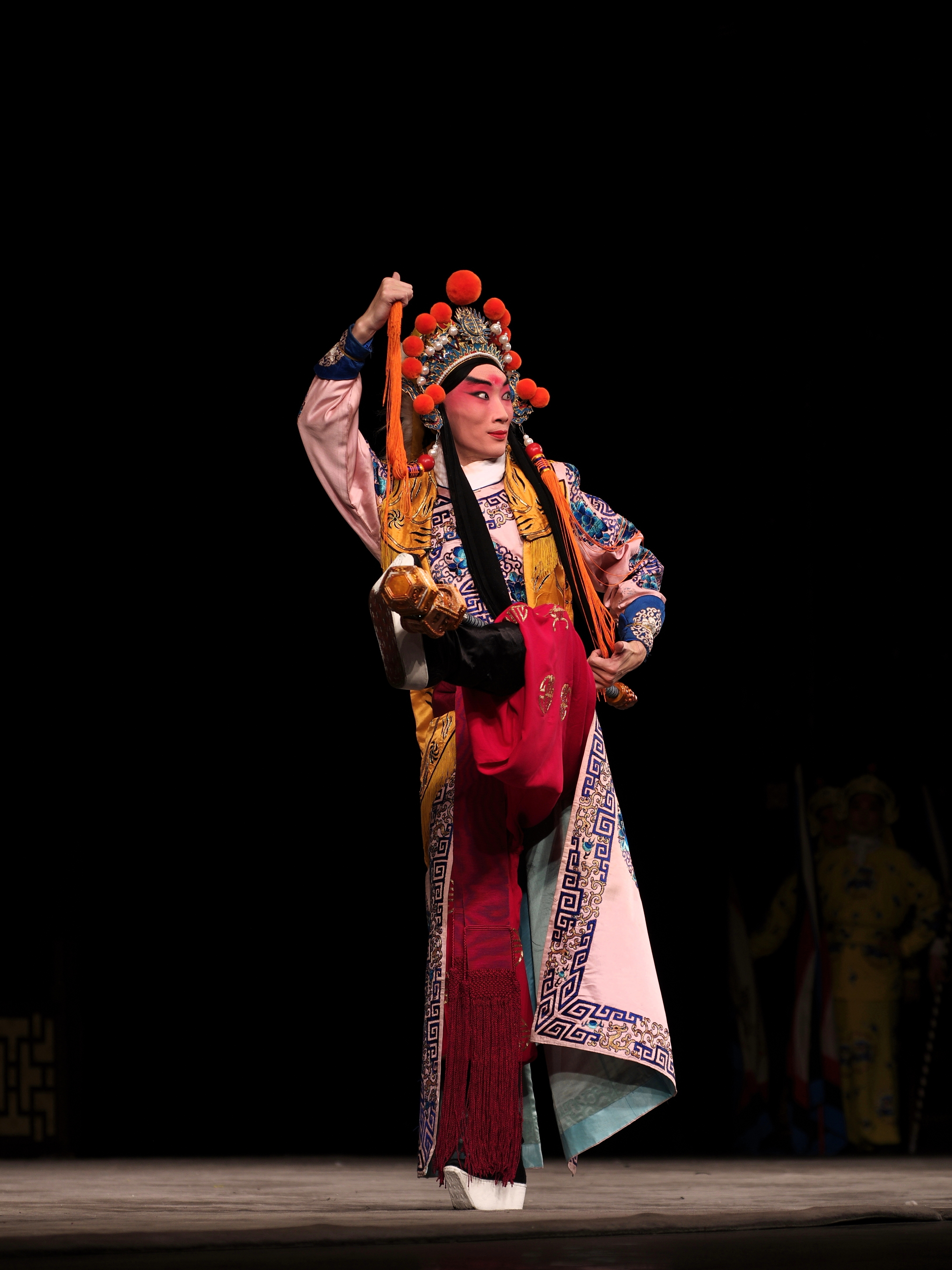|
Li Cunxiao
Li Cunxiao () (d. 894), né An Jingsi (), was an adoptive son of the late-Tang Dynasty warlord Li Keyong who contributed much to Li Keyong's campaigns, but who later rebelled against his adoptive father. He subsequently was defeated by Li Keyong and executed by dismemberment after he surrendered, although Li Keyong soon regretted his death. Background It is not known when An Jingsi was born, but it is known that he, or his family, was originally from Feihu (飛狐, in modern Zhangjiakou, Hebei). He was taken captive by Li Keyong during one of Li Keyong's raids in the region, and Li Keyong raised him as an adoptive son, changing his name to Li Cunxiao. He thereafter became a cavalry officer in Li Keyong's army.''New History of the Five Dynasties'', vol. 36. It was said that after he grew up, he was capable in horsemanship and archery, and no officer in Li Keyong's army rivaled him in ferocity. He often served as Li Keyong's forward commander, and during Li Keyong's campaigns a ... [...More Info...] [...Related Items...] OR: [Wikipedia] [Google] [Baidu] |
Tang Dynasty
The Tang dynasty (, ; zh, t= ), or Tang Empire, was an Dynasties in Chinese history, imperial dynasty of China that ruled from 618 to 907 AD, with an Zhou dynasty (690–705), interregnum between 690 and 705. It was preceded by the Sui dynasty and followed by the Five Dynasties and Ten Kingdoms period. Historians generally regard the Tang as a high point in Chinese civilization, and a Golden age (metaphor), golden age of cosmopolitan culture. Tang territory, acquired through the military campaigns of its early rulers, rivaled that of the Han dynasty. The House of Li, Lǐ family () founded the dynasty, seizing power during the decline and collapse of the Sui Empire and inaugurating a period of progress and stability in the first half of the dynasty's rule. The dynasty was formally interrupted during 690–705 when Empress Wu Zetian seized the throne, proclaiming the Zhou dynasty (690–705), Wu Zhou dynasty and becoming the only legitimate Chinese empress regnant. The devast ... [...More Info...] [...Related Items...] OR: [Wikipedia] [Google] [Baidu] |
Kaifeng
Kaifeng () is a prefecture-level city in east-central Henan province, China. It is one of the Eight Ancient Capitals of China, having been the capital eight times in history, and is best known for having been the Chinese capital during the Northern Song dynasty. As of 31 December 2018, around 4,465,000 people lived in Kaifeng's Prefecture, of whom 1,652,000 lived in the built-up (or metro) area made of Xiangfu, Longting, Shunhe Hui, Gulou and Yuwantai Districts. Located along the Yellow River's southern bank, it borders the provincial capital of Zhengzhou to the west, Xinxiang to the northwest, Shangqiu to the east, Zhoukou to the southeast, Xuchang to the southwest, and Heze of Shandong to the northeast. Kaifeng is also a major city in the world by scientific research outputs as tracked by the Nature Index. The city is home to a campus of Henan University, one of the national key universities in the Double First Class University Plan. Names The postal romanization for the ... [...More Info...] [...Related Items...] OR: [Wikipedia] [Google] [Baidu] |
Zhang Jun (Tang Chancellor)
Zhang Jun (張濬) (died January 20, 904Academia Sinicabr>Chinese-Western Calendar Converter''Zizhi Tongjian'', vol. 264.), courtesy name Yuchuan (禹川), was an official of the Chinese dynasty Tang Dynasty, serving as a chancellor during the reigns of Emperor Xizong and Emperor Xizong's brother Emperor Zhaozong. Early in Emperor Zhaozong's reign, Zhang was a major advocate for the imperial campaign to regain power from the regional warlords, but was removed after commanding a disastrous campaign against Li Keyong and forced into retirement. Late in Emperor Zhaozong's reign, with Emperor Zhaozong physically controlled by another warlord, Zhu Quanzhong, who had designs on taking over the throne as emperor (and eventually did, founding Later Liang), Zhu, while formerly an ally of Zhang's, was concerned that Zhang would encourage other warlords into a coordinated campaign against Zhu to stop his takeover, and so had his ally Zhang Quanyi slaughter Zhang Jun and his household. E ... [...More Info...] [...Related Items...] OR: [Wikipedia] [Google] [Baidu] |
Chancellor Of Tang Dynasty
The chancellor () was a semi-formally designated office position for a number of high-level officials at one time during the Tang dynasty of China. This list also includes chancellors of the short-lived Wu Zhou dynasty, which is typically treated as an interregnum of the Tang dynasty by historians. Origins Ouyang Xiu, the author of the ''New Book of Tang'', asserts that the Tang dynasty inherited its bureaucracy from its dynastic predecessor, the Sui dynasty, under which the founder Emperor Wen of Sui divided his government into five main bureaus: * ''Shàngshūshěng'' (尚書省) – The Department of State Affairs * ''Ménxiàshěng'' (門下省) – The Chancellery * ''Nèishǐshěng'' (內史省) – The Legislative Bureau (note different tone than the eunuch bureau below) * ''Mìshūshěng'' (秘書省) – The Palace Library * ''Nèishìshěng'' (內侍省) – The Eunuch bureau (note different tone than the legislative bureau above), later changed by Emperor Wen's ... [...More Info...] [...Related Items...] OR: [Wikipedia] [Google] [Baidu] |
Emperor Zhaozong Of Tang
Emperor Zhaozong of Tang (March 31, 867 – September 22, 904), né Li Jie, name later changed to Li Min and again to Li Ye, was the penultimate emperor of the Tang dynasty of China. He reigned from 888 to 904 (although he was briefly deposed by the eunuch Liu Jishu in 900 and restored in 901). Zhaozong was the seventh son of Emperor Yizong of Tang and younger brother of Emperor Xizong of Tang. Later Li Jie was murdered by Zhu Wen, the Later Liang ruler who overthrew the Tang dynasty. During Emperor Zhaozong's reign, the Tang dynasty fell into total disarray and rebellions, which had been ongoing since the reign of his older brother Emperor Xizong, as they erupted throughout the country while the imperial government's authority effectively disappeared. In the midst of all this, Emperor Zhaozong tried to salvage the dying dynasty. However, his efforts to reassert imperial power generally backfired, as his unsuccessful campaigns against Li Keyong, Chen Jingxuan, and Li Maozh ... [...More Info...] [...Related Items...] OR: [Wikipedia] [Google] [Baidu] |
Handan
Handan is a prefecture-level city located in the southwest of Hebei province, China. The southernmost prefecture-level city of the province, it borders Xingtai on the north, and the provinces of Shanxi on the west, Henan on the south and Shandong on the east. At the 2010 census, its population was 9,174,683 inhabitants whom 2,845,790 lived in the built-up (''or metro'') area made of 5 urban districts. Yongnian District in Handan and Shahe City in Xingtai have largely formed into a single conurbation. Handan is one of the oldest cities in China, first settled in 6500 BC by the Cishan culture. Throughout the city's long history, it contributed significantly to Chinese culture, serving as the capital of State of Zhao, was northern China's political, economic and cultural center, and home to Tai chi and the first compass, made from stones collected in the nearby Mount Ci (magnet mountain). Handan is designated as one of China's National Famous Historical and Cultural Cities. Ety ... [...More Info...] [...Related Items...] OR: [Wikipedia] [Google] [Baidu] |
Shanxi
Shanxi (; ; formerly romanised as Shansi) is a landlocked province of the People's Republic of China and is part of the North China region. The capital and largest city of the province is Taiyuan, while its next most populated prefecture-level cities are Changzhi and Datong. Its one-character abbreviation is "" (), after the state of Jin that existed there during the Spring and Autumn period. The name ''Shanxi'' means "West of the Mountains", a reference to the province's location west of the Taihang Mountains. Shanxi borders Hebei to the east, Henan to the south, Shaanxi to the west and Inner Mongolia to the north. Shanxi's terrain is characterised by a plateau bounded partly by mountain ranges. Shanxi's culture is largely dominated by the ethnic Han majority, who make up over 99% of its population. Jin Chinese is considered by some linguists to be a distinct language from Mandarin and its geographical range covers most of Shanxi. Both Jin and Mandarin are spoken in Shanx ... [...More Info...] [...Related Items...] OR: [Wikipedia] [Google] [Baidu] |
Changzhi
Changzhi () is a prefecture-level city in the southeast of Shanxi Province, China, bordering the provinces of Hebei and Henan to the northeast and east, respectively. Historically, the city was one of the 36 administrative areas (see Administrative Divisions of Qin Dynasty) extant under the reign of the first emperor of a unified China (see Qin Shi Huang). Nowadays, Changzhi is a transportation centre in Shanxi. Transportations is facilitated by: four controlled-access highways, (Taiyuan-Changzhi, Changzhi-Jincheng, Changzhi-Linfen, and Changzhi-Handan); two railways, ( Taiyuan–Jiaozuo Railway and Handan–Changzhi Railway ); three national highways, China National Highway 207, 208 and 309; and Changzhi Wangcun Airport ( ITAT Code: CIH, ICAO Code: ZBCZ). Internal transportation also includes a bus and taxi network. The city is a rising commercial and industrial centre in the southeastern area of Shanxi. In 2011, its GDP ranked 1st out of 11 prefecture-level cities in the pr ... [...More Info...] [...Related Items...] OR: [Wikipedia] [Google] [Baidu] |
Xingtai
Xingtai (), formerly known as Xingzhou and Shunde, is a prefecture-level city in southern Hebei province, People's Republic of China. It has a total area of and administers 4 districts, 2 county-level cities and 12 counties. At the 2020 census, its population was 7,111,106 inhabitants. It borders Shijiazhuang and Hengshui in the north, Handan in the south, and the provinces of Shandong and Shanxi in the east and west respectively. History Xingtai is the oldest city in North China. The history of Xingtai can be traced back 3500 years ago. During the Shang Dynasty, Xingtai functioned as a capital city. During the Zhou Dynasty, the State of Xingfrom which the present name deriveswas founded in the city. During the Warring States period, the state of Zhao made Xingtai its provisional capital. The city was known as Xindu for most of the Qin Dynasty, but after the 207 BC Battle of Julu (within present-day Pingxiang County, not today's Julu County), it became known as Xiangguo. Duri ... [...More Info...] [...Related Items...] OR: [Wikipedia] [Google] [Baidu] |
Meng Fangli
Meng Fangli () (died July 2, 889) was a warlord in the late Chinese dynasty Tang Dynasty who, from 881 to 889, controlled all or part of Zhaoyi Circuit () — the headquarters of which he moved from Lu Prefecture (潞州, in modern Changzhi, Shanxi) to his home Xing Prefecture (邢州, in modern Xingtai, Hebei) — as its military governor (''Jiedushi''). His move of the headquarters drew resentment from the people of Lu Prefecture, who threw their support behind Li Keyong the military governor of neighboring Hedong Circuit (河東, headquartered in modern Taiyuan, Shanxi), whose forces eventually defeated his. Fearful that his subordinates were turning against him, he committed suicide. Background and seizure of Zhaoyi Circuit It is not known when Meng Fangli was born, but it is known that he was from Xing Prefecture.''New Book of Tang'', vol. 187. As of 881, he was serving as the defender of Tianjing Pass (天井關, in modern Jincheng, Shanxi). That year, while the Gao Xun ... [...More Info...] [...Related Items...] OR: [Wikipedia] [Google] [Baidu] |





